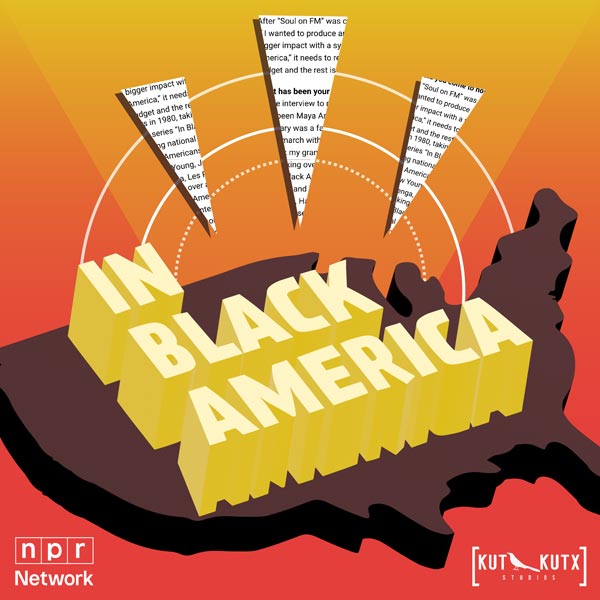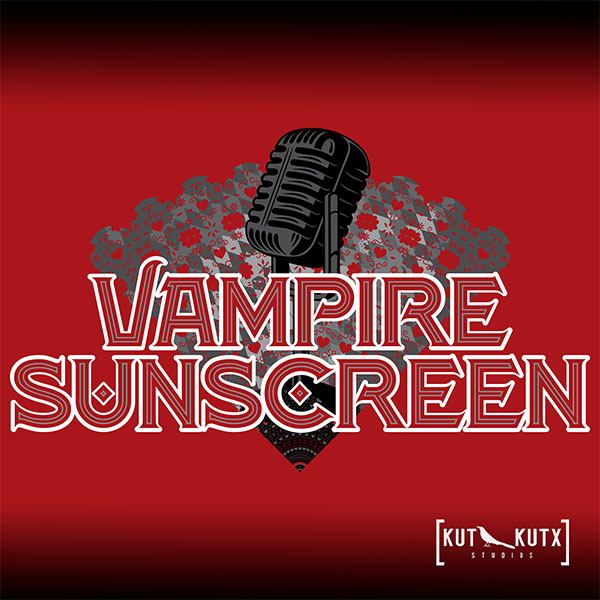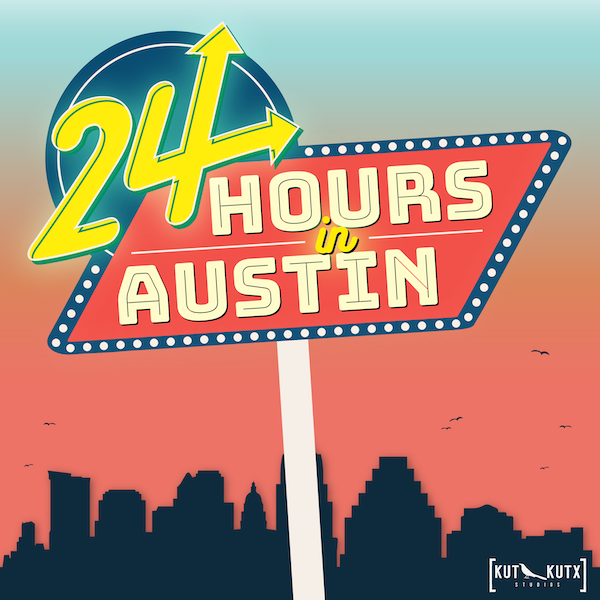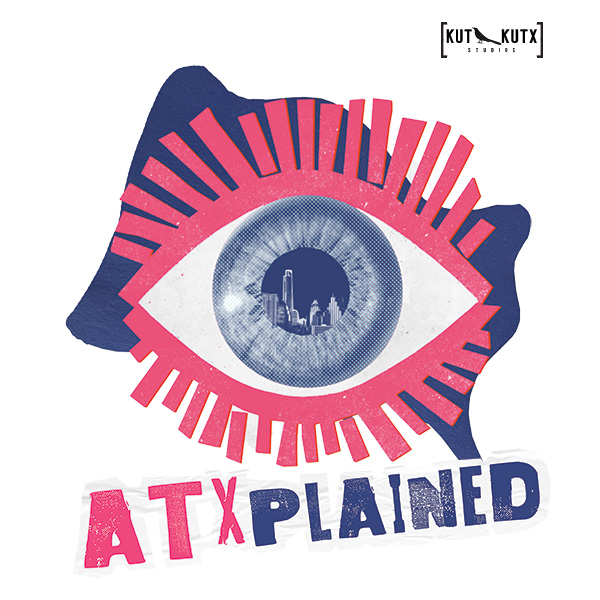This week on In Black America, producer and host John L. Hanson, Jr. speaks with Dr. Tameka Gillum, Associate Professor of Community Health in the College of Population Health at the University of New Mexico, discussing the multilevel society factors that contribute to disparities in gun violence among African American communities.
The full transcript of this episode of In Black America is available on the KUT & KUTX Studio website. The transcript is also available as subtitles or captions on some podcast apps.
Announcer From the University of Texas at Austin, KUT Radio, this is In Black America.
Dr. Tameka Gillum It’s important for us to talk about this. We lose a lot of people who are committing these acts of violence or sometimes just suspected of committing them. We lose them to the penal system. And so our sort of exposure to and participation in the gun violence, the hurt that some participate in and also causes loss or we’re losing by literal loss of life, we’re losing some to the system and we’re sort of contributing to, you know, this the lack of strengthening of our own communities. And so the extent to which we can, you know, check ourselves and those respects, but also understand how, you know, the systems, the instructors structures have sort of set us up in a way to be violent towards each other. And we need to sort of be read to be channeling that energy and refocusing it and towards, you know, more positive outcomes for us all to better build ourselves as individuals or families and as a community.
John L. Hanson Jr. Dr. Tameka Gillum, Associate professor of community health in the College of Population Health at the University of New Mexico. Recently, Gillum coauthored study to examine the multilevel society factors that contribute to disparities in gun violence among African-American communities. The study utilized socio ecological models to understand how different aspects of society, individuals, relationships, community and societal influence of person experience, behavior and health outcome. Their analysis identified several risk factors across all sectors of their research model. Among African-Americans, the authors found persistent various support services such as appropriate medical care and reliable transportation, as well as intrusive policing and chronic exposure to violence in their communities. I’m John L. Hanson Jr., and welcome to another edition of In Black America. On this week’s program, gun violence among African-American community with Dr. Tameka Gillum, In Black America.
Dr. Tameka Gillum Yeah. I mean I think there’s a lot of, of of of additional things at least that we can do. I mean, there’s there’s we know there’s lots of problems with with law enforcement and but we that can be addressed, too. But I mean there’s there’s a point of investing more resources into these disenfranchized communities. Things that can be done more on the policy level and and putting in funds to build up these communities to, you know, to create better school systems for for students, for our kids to go through, to create better sort of environmental spaces for us to just sort of feel good about where we live, to have additional resources and opportunities for our young people in the context of these spaces to put in place. Even, you know, things like more youth positive development type programs that push back against these narratives of us of violence.
John L. Hanson Jr. Dr. Tameka Gillum has over two decades of experience and studying intimate partner violence, health disparities and gun violence. In 2021, gun violence was a major public health issue of growing concern in this country, with 48,830 lives lost to gun related violence. Documenting the highest number of gun related homicides and suicides ever recorded. The African-American community is disproportionately impacted by gun violence, and there are almost 14 times more likely to die by gun homicide than their white counterparts. These disparities prompted Gillum and her team to further says underlying causes of this inequity. Seeking to clarify the factors contributing to this public health crisis. These include factors such as institutional racism, inadequate community health support in disadvantaged neighborhoods, and structural economic disadvantages faced by African-Americans. Recently In Black America spoke with Dr. Tameka Gillum.
Dr. Tameka Gillum Well, I was born in Michigan, but family moved to Philadelphia after, you know, plants closing and difficulty with the jobs or whatever. So I mostly grew up in Philadelphia. Although I did return to Michigan for my master’s and Ph.D. studies, so yes, I did Michigan State and the Spartan Go green. I heard you almost say University of Michigan. So that would that would not have been okay. But that’s her rival. But yes, we are Michigan State. So yeah, And since then, I’ve sort of been in a few different places where I’ve done research and teaching.
John L. Hanson Jr. So what led you to majoring in, I guess, health education? Yeah.
Dr. Tameka Gillum Well, actually, I am a community psychologist by training, and so I did my undergraduate studies in psychology, eventually discovered community psychology, which is sort of a smaller sort of baby of the field of psychology, even though it was founded in the 60s. But it takes a much more, look at individuals within context so it peers away from looking solely at individuals as the source of their concerns or problems, especially when we’re talking about major sort of social issues. And so similar to what we did in the paper, in terms of looking at the African-American community at these different levels, what factors are influencing violence as opposed to just looking at, you know, that there’s potential deficits within this community? You know, it’s about not only individual level factors, but also relationship, community, societal. So community psychology really looks at individuals in context and really also seeks to do prevention work in addressing many of these social concerns. So a lot of us look at sort of major social issues, and that really lends itself to community health as well, because community health is really about prevention and community based research and looking at sort of larger scale problems and how do we do community based intervention. And so most of my faculty positions have been in public health and community health, but also some in community psychology as well. So I’ve gone back and forth a little bit, but it’s mostly been in public health. But that is because, you know, my primary work, my research for over 25 years has been primarily in looking at intimate partner violence, within racial, ethnic minority and sexual minority populations. So here in the States, that’s predominately been with the African-American community and African immigrant communities. And so because I view intimate partner violence and now gun violence as well as a public health issue, a public health concern that we should be addressing, and sort of drew me into, going more into public health and trying to tackle issues like this from a public health perspective.
John L. Hanson Jr. Now we’re going to get into the study, but why is the African-American community particularly. Associated with this type of activity.
Dr. Tameka Gillum Yeah. And so that’s some of where the overlap between my intimate partner violence work and this gun violence piece comes in, as well as community violence. Because based on our experience here in the United States, we experience a lot of risk factors and we experience a lot of disadvantage. We experience a lot of conditions or circumstances that put us at increased risk for experiencing violence overall. Totally getting away from this narrative of of the African-American community is inherently dysfunctional. And that’s why we have these problems. No, it’s moreso because we’ve been sort of put in conditions and circumstances that increase the likelihood that we’re going to be exposed to these types of things. And so when we look at things like intimate partner violence, when we look at things like gun violence, poverty, for example, you know, we as a community experience disproportionate rates of poverty. Well, we know from research that poverty is associated, you know, poverty living in poverty is associated with increased rates of violence in those contexts. Right? So it’s not just that African-Americans themselves are more violent, but African-Americans are more likely to experience poverty. One of the other papers ever looked at the intersection of poverty and violence in the African American community and other African diaspora is because that’s one of those things that we experience. We experience residential segregation due to structural inequalities that disproportionately places us in communities that are disenfranchized, that have less resources, but subsequently experience more of these concerns. We also have the structural issue of racism, which leads to, you know, portrayals of negative images of African-Americans, which some of us internalize and unfortunately manifest in terms of violence against each other. But it also then contributes to why we have increased rates of violence committed against us by police officers, for example. A lot of them are, you know, consciously or subconsciously buying into these negative portrayals of African Americans and viewing African-Americans as more of a threat and then consequently more likely to respond to their actions, even innocuous ones, to respond to them with violence. Same thing with, you know, our sort of peers when we live in even predominantly white neighborhoods where, you know, a lot of our neighbors are exposed to some of those same negative images, those same negative stereotypes perceive us as threat. So we’re at increased risk regardless of of where we go or what we’re doing or who are exposed to because of these different biases. It also places us in a position where because we’re in these spaces with more violence, there’s more of a police presence in our communities, right? And so then that increases the likelihood even more that we’re going that our brothers and sisters and youth are going to be part of the penal system, but also just increases the likelihood that we’re going to be exposed to police and police officers and the violence that they have inflicted disproportionately on our communities. And so all of these pieces sort of contribute to why we experience this increased risk and have more of these different types of violence in our communities, including, but not limited to gun violence.
John L. Hanson Jr. Was there a team that was part of the study that you conducted?
Dr. Tameka Gillum Yeah. I mean, it’s I tend to always sort of work in teams, but for this particular one, it was a number of basically former students of mine that are also African-American and have different interests in terms of addressing African-American issues and concerns. And so one of them is is working on her Ph.D. at the University of Maryland and Baltimore County and other the other is soon to be working on her Ph.D. as well. She has a master’s. And so we all sort of contributed as well to producing this particular piece.
John L. Hanson Jr. Now, one thing’s about gun violence. Why is it that this particular on those particular events you mentioned, you know, poverty and living in segregated neighborhoods, these particular events are particularly affecting African-Americans. But also, is there a systemic problem that has existed over the years that cause these type of activities to occur?
Dr. Tameka Gillum And there’s the legacy of slavery in this country for Black folks, which subsequently led into Jim Crow, which subsequently led into other forms. I mean, that legacy has contribute to the disproportionate poverty that we experience as the African-American. Community is contribute to things like lack of homeownership. The the that the lack of generational wealth that we were able to accomplish. Right. That is all sort of that’s been centuries in the making, right? So it makes it so that we as a community experience higher rates of poverty, right? And so that definitely is a historical circumstance. This narrative that we’ve painted over the centuries here in the U.S. of Black men as brutes, for example, that goes, you know, sort of all the way back to slavery of, as folks who are animalistic, as folks who are prone to violence. Those narratives have sort of, have, continued over the years just in various different forms, right? And so, you know, we, on one hand, we can, you know, point to what’s most often now referred to as implicit bias, which yeah, definitely happens, you know, but sometimes explicit. But they won’t say that. But those perceptions of, you know, African-Americans as inherently dysfunctional, as violent as as brutes, as dysfunctional. And that goes back hundreds of years. And it’s just manifesting itself in different forms in this space. We have a history of the history of redlining, which prohibited sort of home ownership in certain spaces for African-Americans and sort of subjected them to certain types of neighborhoods and environments that to this day, research supports those. Most of those neighborhoods are still disenfranchized receive limited resources that come into those spaces. And so a lot of us are living in communities where we experience a number of different structural inequalities where not only, you know, violence is higher, there’s less educational opportunity, there’s less opportunity for advancement. Our children, you know, I mean, we do have obviously poor public education, but in most of our neighborhoods, it’s it tends to be. So prior to Keisha and and students potentially don’t feel safe in those school environments. So we this this whole space has put us predominantly in these sort of disenfranchized neighborhoods which lend them where the conditions lend themselves to more violence being perpetrated in those spaces. So all of these sort of all of these conditions have historical roots. And unfortunately, we’re still kind of far from properly addressing those issues, which would help with a lot of different areas. Now, if we if we were able to better address some of those concerns, there’d be, you know, more, wealth for African-American community. Is there be stronger education, there’d be more advancement and opportunities, there’d be less violence. But we have yet to sort of properly address those historical wrongs that have sort of happened and those negative portrayals and experiences that have followed us for generations.
John L. Hanson Jr. That brings me to my next question. Why is it important for us to understand these issues of gun violence?
Dr. Tameka Gillum It’s important because on one hand, we’re experiencing significant loss of life, right? We’re losing our brothers and sisters as a result of this violence. And and yes, some of us are you know, we’re a lot of is perpetrated by us against each other. But again, it’s because of these structural problems. And so, you know, we have significant loss of life. We’re losing men, women and children. You know, when you talk about research that shows that we’re 14 times more likely to die by gun homicide, when you talk about our children being 20 times more likely and in some more recent research, 20 times more likely to die at the hands of a gun. We’re we’re losing generations. We’re losing fathers, we’re losing mothers, we’re losing children. And so, I mean, that that’s one of the reasons why it’s important. Loss of life is only one piece. Right? We also then, you know, there are a lot of people who experience gun violence and survive gun violence and deal with the physical and psychological and economic outcomes or consequences associated with that. So we have a lot of people in community that are experiencing the detrimental outcomes associated with their experiences of victimization by gun violence. We have a lot of people within our community. I mean, so much research support that so many in our community have been exposed to gun violence, have lost loved ones to gun violence, have lost family members, friends, peers. And so, you know, that significant loss also impacts us all. You know, when we it impacts us psychologically when we’ve experienced gun violence, a loss to gun violence that impacts families. And communities that again lose fathers lose mothers, lose sisters, brothers, kids. You know, those psychological impacts affect us as well. And so when we think about sort of maintaining and building and keeping a strong community, it’s important for us to talk about this. We lose a lot of people who are committing these acts of violence or sometimes just suspected of committing them. We lose them to the penal system. And so our sort of exposure to and participation in the gun violence that that some participate in also causes loss or we’re losing by literal loss of life. We’re losing some to the system and we’re sort of contributing to, you know, this lack of strengthening of our own communities. And so the extent to which we can, you know, check ourselves of those respects, but also understand how, you know, the systems, instructors structures have sort of set us up in a way to be violent towards each other. And we need to sort of be read. We channeling that energy and refocusing it and towards, you know, more positive outcomes for us all to better build ourselves as individuals and families and as a community.
John L. Hanson Jr. If you’re just joining us, I’m John L. Hanson Jr., and you’re listening to In Black America from KUT Radio and speaking with Dr. Tameka Gillum, associate professor of Community Health, Education, College of Population Health at the University of New Mexico, and coauthor of a study that examined multi level sociological factors contributing to gun violence in Black communities. Tameka Gillum. Is there a sense of numbness to gun violence in African-American communities?
Dr. Tameka Gillum Well, I don’t know that I’d necessarily say numbness, but I think a lot of us have just sort of sort of take this as just.
John L. Hanson Jr. As a.
Dr. Tameka Gillum Force, as norm in the context of our spaces. And it it doesn’t have to be enormous, should not be a norm. But, you know, the fact that it happens so frequently in our spaces, the fact that it doesn’t get the type of media attention and resources that that show that people care about what’s happening in our communities, you know, all of those things sort of just contribute to this sort of notion of this is just sort of happens and this is just part of our experience, but we definitely don’t need to see it as part of our experience. I mean, some of the research, the other research that we cited in the paper even spoke to, you know, children talking about middle school children, sort of resigning to the fact that they live in these violent spaces and then unfortunately experiencing this sort of hypervigilance and, you know, all the things sort of associated with that. And so, unfortunately, I think we have to much viewed it as the norm because it happens so frequently, because many of us don’t understand the many factors that contribute to it and because the larger society has sort of viewed it as just a norm for us. And we definitely need to better push back against that. I mean, there’s things that need to be done on a larger sort of societal structural policy level, but then there’s things that we also need to do within the context of our communities to get it out there. Know this is not normal. No, this doesn’t have to be our experience to help to better things in our spaces as well.
John L. Hanson Jr. Obviously, law enforcement intervention isn’t working. What are some of the suggestions that you have?
Dr. Tameka Gillum Yeah, I mean, I think there’s a lot of additional things at least that that we can do. I mean, there’s there’s we know there’s lots of problems with with law enforcement and but ways that can be addressed, too. But I mean there’s there’s a point of investing more resources into these disenfranchized communities, things that can be done more on the policy level and and putting in funds to build up these communities to, you know, to create better school systems for for students, for our kids to go through, to create better sort of environmental spaces for us to just sort of feel good about where we live, to have additional resources and opportunities for our young people in the context of these spaces to put in place. Even, you know, things like more youth positive development type programs that push back against these narratives of us as violent, that push back against these negative perceptions of of African-American communities. As we engage, we can better engage in efforts to build our communities, to to build our spaces to and to strengthen and empower our youth, to strengthen and empower our families can also, you know, do better. The larger society can certainly do better in terms of the types of policies we have in place that make fire. Arms more accessible in our communities. So definitely needs to be better efforts on the federal level to do better in terms of sort of controlling or addressing those types of things. We need to engage in efforts that help to reduce things like, intimate partner violence, community level interventions for men and boys around that help us to, to reduce the, the numbers of intimate partner violence that happen in our communities that place our women at increased risk for intimate partner homicide. And we need better mental health resources and services for folks who’ve been exposed to intimate partner violence. For those of us who deal with, you know, some of the consequences and and challenges of living in a racist society and the type of psychological toll that that can take and how we can better normalize receiving, seeking and receiving that type of assistance from culturally responsive therapists that are better able to deal with the types of traumas that we experience and facilitate our healing. Whether we’ve directly experienced this type of violence or whether we’ve experienced it vicariously through our living spaces or our loved ones. There’s lots of different initiative things that that can be done on our sort of individual and interpersonal and community level, but then also these larger federal initiatives that can help to better invest in and build up African-American communities and spaces, reduce the likelihood of these guns getting into our spaces and other sort of writing some of those structural inequalities that have limited our ability to gain wealth, to advance ourself, you know, those types of things. As we chip away at those types of things, they have the potential to reduce the amount of violence that we experience within the context of our spaces.
John L. Hanson Jr. And Dr. Gillum, you articulated what needs to be done. Do you see a willingness to do it? Well.
Dr. Tameka Gillum Yes and no. We we do a little bit better in terms of, you know, some of our community leaders helping to take the initiative in terms of creating passive youth programs for, for example, attempting to to work and build up our communities. I think more of us definitely need to do that. But some of us do, you know, do those things the the things that need to to and there are when we talk about sort of creating more culturally sensitive trauma, informed mental health services, there are sort of some efforts to do that we do need to do better about, you know, I, I was faculty once in a, in a place that trained future licensed mental health professionals. Right? And we, we did some of that, but we could’ve done better. You know, so those types of things are happening. Unfortunately, the things that have to happen on a larger society level to sort of write some of these these sort of historical wrongs that have happened to us, I think are slower to, to come to fruition. And I think, you know, one of the when we talk about sort of investing in our communities, you know, part of that is going to be, you know, trying to get more elected officials that look like us and, and have our interests at heart is to, you know, positions in the government to be able to make these types of proposals and to support these types of proposals that are going to put resources into our communities to help uplift our spaces. We definitely you know, there’s not a there doesn’t seem to be enough interest on sort of the larger federal level in terms of investing in our spaces and what can be done to strengthen and better our communities. We need those initiatives that try to, you know, address those, you know, the, the legacy of redlining and how that’s impacted, homeownership and generational wealth for African American communities. There can be better initiatives in place to address those as well. We aren’t doing enough with that. We aren’t doing enough with regulation of firearms and, and the types of policies and legislation that we can be putting in place to sort of, start to curb that a little bit more. And we know that’s a very, it’s a big political, political issue. It’s a divisive issue, but consequently there’s been very slow progress on it. You know, the recent bipartisan act that was passed a couple of years ago was the first legislation in 30 years to, you know, try to address this issue of violence.
John L. Hanson Jr. And couple more question, Dr. Gillum, is the gun violence issue in in America, particularly indigenous to America, are the other countries facing similar problems?
Dr. Tameka Gillum Good question. So we’re the worse of of the. All up, nations have what they call sort of first world or developed nations. We definitely are the worst, which is very telling. Like we experienced the highest rates of gun violence.
John L. Hanson Jr. Dr. Tameka Gillum, associate professor of community health in the College of Population Health at the University of New Mexico. If you have questions, comments or suggestions as to future In Black America programs, email us at InBlackAmerica@kut.org. Also, let us know what radio station you heard is over. Don’t forget to subscribe to our podcast and follow us on Facebook and Twitter. You can hear previous programs online at kut.org. Also, you can listen to a special collection of In Black America programs at American Archive of Public Broadcasting. That’s Americanarchive.org. The views and opinions expressed on this program are not necessarily those of this station or of the University of Texas at Austin. Until we have the opportunity again for technical producer David Alvarez, I’m John L. Hanson Jr. Thank you for joining us today. Please join us again next week.
Announcer CD Copies of this program are available and may be purchased by writing to In Black America CD’s, KUT Radio, 300 West Dean Keeton St, Austin, Texas 78712. This has been a production of KUT Radio.
This transcript was transcribed by AI, and lightly edited by a human. Accuracy may vary. This text may be revised in the future.
